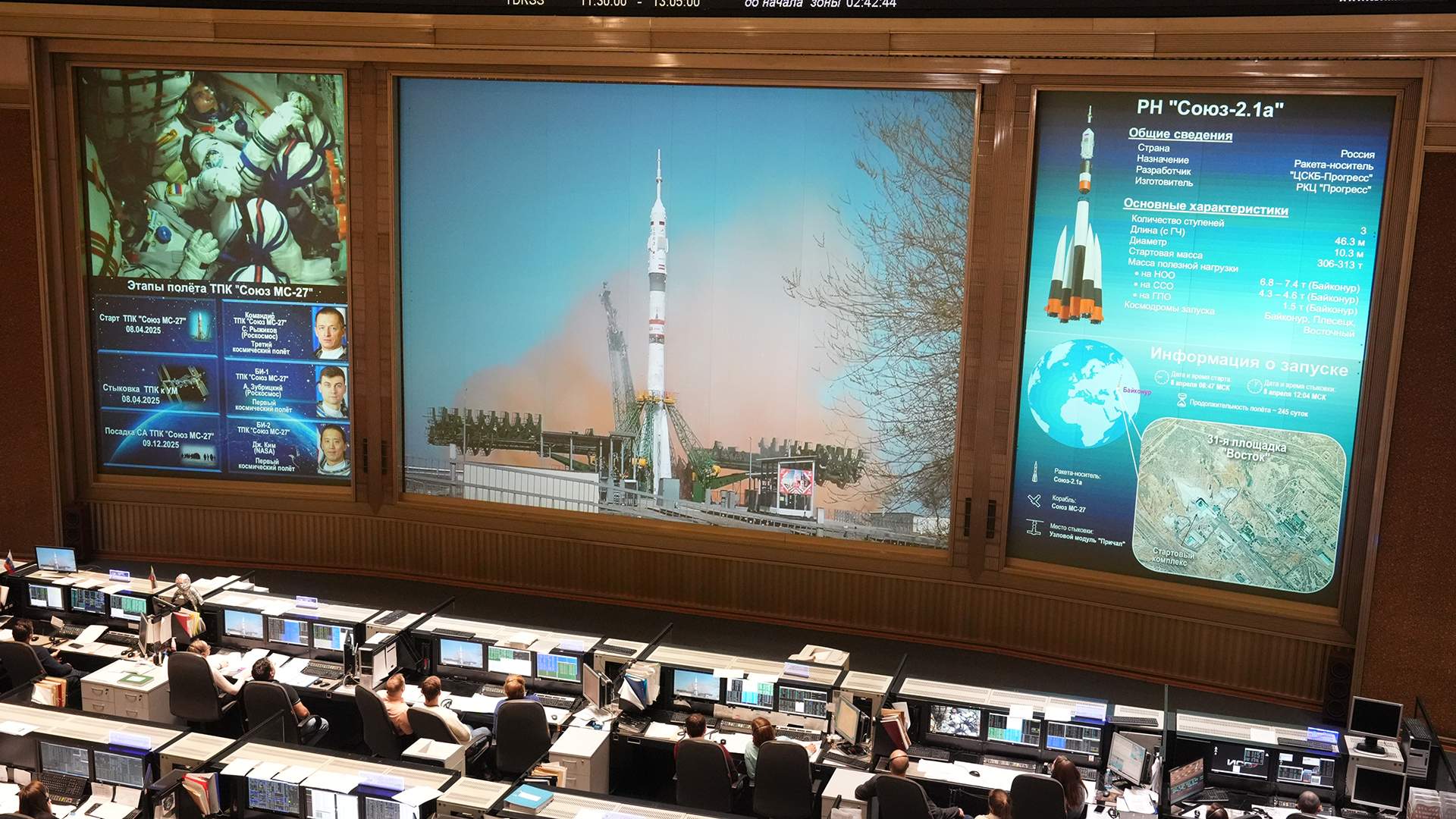- Статьи
- Science and technology
- Well-coordinated Soyuz: Victory Rocket successfully delivered a ship with a crew to the ISS
Well-coordinated Soyuz: Victory Rocket successfully delivered a ship with a crew to the ISS

The Soyuz MS-27 manned spacecraft, using the Soyuz-2.1a launch vehicle, which was named the Victory Rockets in honor of the 80th anniversary of Victory in the Great Patriotic War, delivered the participants of the 73rd expedition to the ISS. The flight took place according to a two-turn scheme and took 3 hours and 10 minutes (seven minutes faster than planned). Experts noted that such a path is possible thanks to the precise digital control system and reliability of Soyuz-2.1A. In the future, Russian ballistics specialists will work out a single-turn flight pattern. Thanks to her, astronauts will be able to get to the ISS in about an hour, experts believe.
"Victory Rocket"
On April 8, the Soyuz MS-27 manned spacecraft delivered participants of the 73rd long-term expedition, Russian cosmonauts Sergei Ryzhikov and Alexei Zubritsky, as well as NASA astronaut Jonathan Kim, to the International Space Station. The flight took place according to a short two-turn scheme and took 3 hours and 10 minutes.
The spacecraft was launched into low-Earth orbit by a Soyuz-2.1a launch vehicle. The launch from launch pad No. 31 of the Baikonur cosmodrome took place at 08:47, exactly on schedule. The separation of the stages and the launch of the spacecraft into low-Earth orbit were carried out normally. The docking with the module of the Berth orbital station took place at 11:57 Moscow time (seven minutes earlier than planned).
The launch was dedicated to the 80th anniversary of Victory in the Great Patriotic War. In honor of this event, Soyuz-2.1a received the symbolic name "Victory Rocket". About 2,500 people watched the launch at Baikonur, which became a record number. The audience included famous people, journalists and bloggers from all over the world.
According to Roscosmos, in addition to the crew, Soyuz MS-27 delivered 180 kg of cargo into orbit, including personal belongings of crew members, fresh food and stowage for scientific experiments.
The expedition to the ISS has already become Sergey Ryzhikov's third in his career. At the same time, Alexey Zubritsky and Jonathan Kim were in orbit for the first time. The Russian cosmonauts are expected to stay at the station for 245 days and return to Earth on December 9, 2025. They will perform over 40 experiments and make two spacewalks. At the same time, Expedition 72 participants Alexey Ovchinin, Ivan Wagner and Donald Pettit will return to Earth on the Soyuz MS-26 spacecraft on April 20.
"Launching spaceships into orbit is for us, huge Russia, for our people, our cosmic duty, our cosmic everyday life," Dmitry Konanykhin, a writer, cosmonautics expert and presenter of the Russian Radio University program, commented on the event.
The symbolic name of the rocket, he added, would remind us that our astronauts reach the ISS six times faster than Americans. This result is achieved by the work of Russian mathematicians, ballistics, technologists, materials scientists, chemists, electronics engineers, communications specialists, engineers of dozens of specialties. This is not an accident, but a labor feat of workers in the space industry.
— Launches with patriotic symbols are carried out regularly in Russia. For example, last year there was a launch dedicated to the 1015th anniversary of the city of Yaroslavl, which will be celebrated in 2025. Our country honors the memory and does not abandon its traditions," said Nicholas Oxman, author of the Cosmodiver Telegram channel.
In his opinion, it is justified to place advertising materials on rockets — such activities can bring about 200 million rubles of income per year.
How long can it take to get to orbit
— The two-turn circuit allows using only two engine ignitions to move the ship from the launch orbit at an altitude of 200 km to the ISS flight orbit at an altitude of 400 km. Moreover, before the second power—up, it turns out to be in close proximity (5-10 km) from the station, which makes it possible to perform all rendezvous operations in half an hour," commented Pavel Gaiduk, an expert and senior researcher at the Museum of Cosmonautics.
He stressed that such a scheme is available due to the exceptional accuracy of Soyuz-2.1a, which has been in operation since 2020. The launch vehicle is equipped with an accurate digital control system, due to which the launched ship, once in orbit, already knows its spatial parameters. Previously, they were transmitted only a few turns after the rotation of the device around the Earth.
To this must be added the reliability of launch vehicles, which allows launches to be carried out at a strictly scheduled time despite weather conditions. This makes it possible to launch at the most suitable moments for ultra-short flight, the expert added.
— Previously, two-day schemes were used, among other things, because there were various difficulties in flight. For example, the batteries did not open or the communication equipment failed. The time reserve made it possible to fix problems and bring the ship to the station in good working order," Hero of Russia, test cosmonaut Oleg Artemyev said at the pre—launch broadcast.
Now, he added, the equipment has become more reliable. At the same time, thanks to Russian ballistics, the path to the ISS was reduced to two turns. However, another breakthrough is possible soon, which will allow you to get to the station using a single-turn circuit within an hour, he believes.
Переведено сервисом «Яндекс Переводчик»
